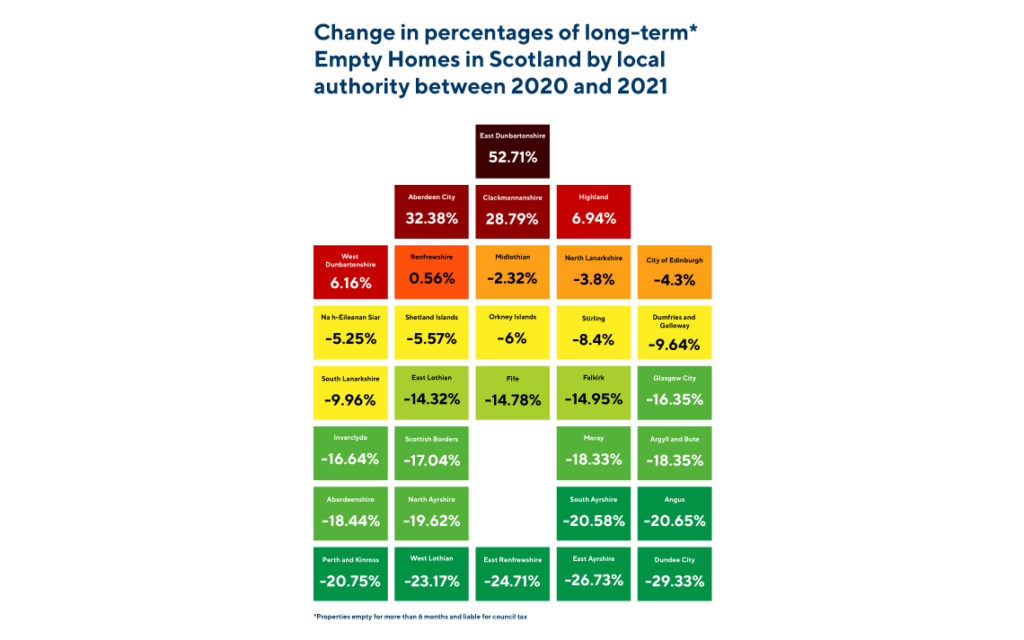Fewer empty homes but more to do as numbers remain above pre-pandemic levels
The Scottish Empty Homes Partnership (SEHP) has welcomed a fall in the number of long-term empty properties in Scotland but urged councils to make tackling empty homes a key part of their housing strategy, as numbers remain above pre-pandemic levels.
Statistics published today by the Scottish Government showed that the number of long-term empty properties fell by 7.5% compared to 2020 (47,333 to 43,766) but remain 6.5% higher than before the Covid-19 pandemic in 2019.
6 local authorities (Aberdeen City, Clackmannanshire, East Dunbartonshire, Highland, Renfrewshire, West Dunbartonshire) saw numbers of long-term empty properties rise with the remainder seeing falls in the last 12 months.
Other Key statistics in the statistics published today show:
- Numbers of homes empty for 6 to 12 months has gone down from 16,782 to 15,912 a decrease of 5.18%. However this is still 15.16% higher than pre-pandemic.
- Numbers of homes empty for more than 12 months has gone down from 30,551 to 27,854 a decrease of 8.83%. This means that the number of homes empty for more than 12 months is now 2.61% higher than pre-pandemic.
The 11th Scottish Empty Homes Conference takes place on 1 February 2022 and offers an opportunity for councils across Scotland to learn more about how to tackle the issue of empty homes.
Commenting on the figures, Shaheena Din, National Project Manager for Scottish Empty Homes Partnership, said: “It is encouraging that the number of long-term empty properties has fallen this year but it is a concern that the numbers remain higher than they were before the pandemic.”
“Councils across Scotland have done excellent work on returning long-term empty properties to use but must ensure that work is central to their wider response to housing supply challenges. Bringing empty homes back in to use is not a silver bullet but must be part of the solution and is one which brings additional benefits for local neighbourhoods and regional economies.”

